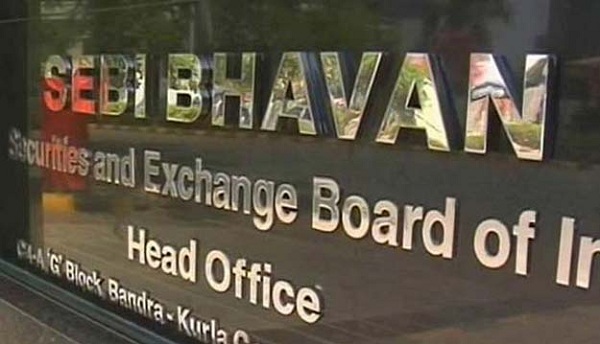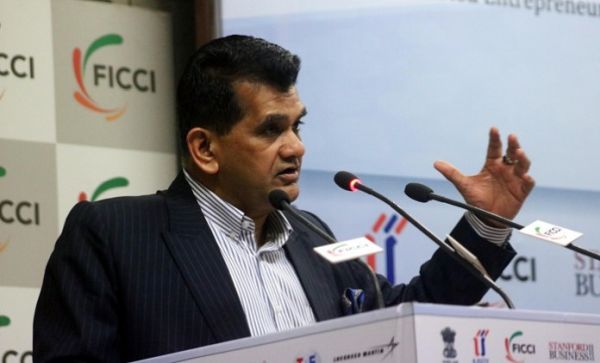
by admin | May 25, 2021 | Commodities, Commodities News, Commodity Market, Investing, Mutual Fund
 New Delhi : The Securities and Exchange Board of India (SEBI) on Friday allowed mutual funds (MFs) and portfolio managers to invest in commodity derivatives to strengthen the market offerings and attract more players.
New Delhi : The Securities and Exchange Board of India (SEBI) on Friday allowed mutual funds (MFs) and portfolio managers to invest in commodity derivatives to strengthen the market offerings and attract more players.
“The Board deliberated and approved the proposal contained in the memorandum to enable the participation by mutual funds and portfolio managers in exchange traded commodity derivatives in India subject to certain safeguards,” SEBI said after its board meeting here.
“Further, Category III alternative investment funds, which are already permitted to participate in commodity derivatives, have now been permitted to deal with goods received in delivery against physical settlement of such contracts, if any,” the regulator added.
Currently, the commodity markets are dominated by retail level traders and a few corporate hedgers and speculators. The entry of mutual funds and portfolio managers will attract more hedgers to the market and lead to its overall development.
Market players said the SEBI move could offer structured and attractive products to deepen the commodity derivatives market. It would also lead to more participation from the funds.
Institutional participants like mutual funds and portfolio managers will add long-term liquidity to the markets, said the member of a commodity exchange.
The participants in the commodity derivatives market comprise retail and wholesale commodity traders and a few corporate clients and punters across asset classes.
The SEBI also allowed Category III alternative investment funds to trade. Foreign companies with exposure to Indian commodities not having presence in India were also allowed to trade recently.
—IANS

by admin | May 25, 2021 | Commodities, Commodities News, Economy, Markets, News
 Mumbai : A day after market regulator SEBI declared the commodity broking arms of Motilal Oswal and India Infoline (IIFL) as not “fit and proper” in the NSEL case, the scrip price of both the companies fell up to 5 per cent and 9 per cent respectively on Monday.
Mumbai : A day after market regulator SEBI declared the commodity broking arms of Motilal Oswal and India Infoline (IIFL) as not “fit and proper” in the NSEL case, the scrip price of both the companies fell up to 5 per cent and 9 per cent respectively on Monday.
Stock price of Motilal Oswal on BSE declined up to 5.11 per cent but pared some of its early losses trading 2.85 per cent down at Rs 594.85 per share, while IIFL Holding Ltd. tanked up to 9 per cent.
The Securities and Exchange Board of India (SEBI) is probing as many as 300 brokers for violation of rules colluding with the National Spot Exchange Ltd (NSEL) to defraud investors. In fact, the regulator has named brokerage firms in a first information report (FIR).
What this meant was that NSEL did not maintain sufficient underlying stock on trades it allowed even as brokers sold lucrative contracts to investors.
This builds defaults and resulted in the exchange denying payments worth Rs 5,600 crore in 2013.
“In view of the seriousness of the matter, facts and circumstances of the case, the conduct of the noticee in its functioning as a commodity broker is questionable and has certainly eroded its general reputation, record of fairness, honesty and integrity and has therefore affected its status as a ‘fit and proper person’ to be an intermediary in the securities market,” the designated authorities said in the report submitted to SEBI.
In an order uploaded on its website on February 22, SEBI said that the brokers had a close association with NSEL and allowed themselves to “become a channel”.
“Thus the noticee is not a fit and proper person to be granted registration/to operate as a commodity derivatives broker,” the order said.
SEBI has also ordered both Motilal Oswal and IIFL to transfer securities of all their clients and allow withdrawal within 45 days of the order.
Failing this, “the noticee shall transfer its balance clients with their corresponding securities and funds to another person, holding a valid certificate of registration to carry on such activity, within a further period of 30 days”, the order said.
—IANS

by admin | May 25, 2021 | Opinions
 By Taponeel Mukherjee,
By Taponeel Mukherjee,
The “Composite Water Management Index” report released by the NITI Aayog recently highlights the issues confronting water management in India. A multi-pronged approach to tackle these problems is warranted. In a world where technology and infrastructure create synergies, smart water meters are one component of the strategy that can help us mitigate the water crisis.
Smart water meters have the potential to assist in efficient water usage because they primarily help utilities to bill their customers the correct amount, identify and resolve system issues that lead to water wastage and assist in creating a water ecosystem that is conducive for efficient usage.
To understand this better, one needs to look at the two components of water produced by utilities: (i) the part that generates revenue and (ii) the “non-revenue” part, or water generated by utilities that is not revenue earning. The criticality of reducing the element of non-revenue water in achieving a more sustainable water management system in India cannot be overemphasised.
To better appreciate the way smart meters assist in creating a more robust water management system, one needs to understand both “apparent” and “real” losses that lead to non-revenue water.
As defined by the American Water Works Association, “Apparent losses are the non-physical losses that occur in utility operations due to customer meter inaccuracies, systematic data handling errors and unauthorised consumption (and…) real losses are the physical loss of water from the distribution system, including leakage and storage overflows.”
In common parlance, “apparent losses” lead to utilities suffering revenue loss because of information asymmetry whereas “real loss” is wastage of water for which the production cost is incurred but it fails to reach the end-user. Smart meters, if implemented well, have the potential to resolve a large part of these two issues.
Beyond smart meter rollouts, water utilities in India will also have to start focussing on water “asset management” in a holistic manner. Better data, data analysis and capacity-building will be required to train and equip utility staff to use the surfeit of data that will gradually be available to make more informed decisions. Capacity-building amongst utility workers will be a critical component of delivering results through smart water meter infrastructure.
Apart from the operational aspects, the financing mechanism employed to deploy the high upfront cost smart water meters will be crucial. At its very core, water infrastructure assets have three sources of financing available in taxes, water tariffs and subsidies.
Given the contribution of water towards society and the increased urbanisation in India (according to the UN 2018 Revision of World Urbanisation Prospects, 34 per cent of India’s population lives in urban areas, a number expected to be well above 50 per cent by 2050), government expenditure will the critical component to finance smart meter infrastructure.
In this regard, one will have to price in the improvement in profit margins for water utility businesses from the new infrastructure, margins that can hopefully be utilised to create more infrastructure.
Smart meter infrastructure also provides an opportunity to multilateral banks and development agencies to assist in creating and expediting much-needed water infrastructure through grants and low-cost loans. The decision by the European Investment Bank (EIB) last year to fund the E-Distribuzione’s electric smart meter rollout in Italy through a Euro 1 billion loan is an example of the long-term lending support required.
While granular operational expertise at the ground level will be required to execute the project successfully, it will be equally crucial that smart meters at an aggregate level are viewed as an infrastructure asset to create financing mechanisms best suited to reduce barriers to usage.
As the smart meter roll-out gathers steam, it must be underscored that the implementation will be a long-term project. It will be necessary that learnings along the way are used to improve impact. It will be vital that the “input, process, output, outcome and impact” model is fully utilised. A robust policy framework that looks to improve on both the operational and financial aspects of the business will contribute very significantly towards India using its water resources prudently.
As city-wide roll-outs of smart water meters gather momentum, it will be mission critical that learnings are utilised to improve the future deployments. Besides, the ability of policymakers to create an environment where the public understands better the usage and benefits of smart water meter infrastructure will go a long way in creating a mechanism to manage water better.
However, managing non-revenue water better through smart meters is one part of a multi-pronged approach required to deal with the impending water crisis. Better policies for both groundwater and surface water management are necessary conditions for smart water meters to deliver their full potential.
(Taponeel Mukherjee heads Development Tracks, an infrastructure advisory firm. Views expressed are personal. He can be contacted at taponeel.mukherjee@development-tracks.com or @Taponeel on Twitter)
—IANS

 New Delhi : The Securities and Exchange Board of India (SEBI) on Friday allowed mutual funds (MFs) and portfolio managers to invest in commodity derivatives to strengthen the market offerings and attract more players.
New Delhi : The Securities and Exchange Board of India (SEBI) on Friday allowed mutual funds (MFs) and portfolio managers to invest in commodity derivatives to strengthen the market offerings and attract more players.
